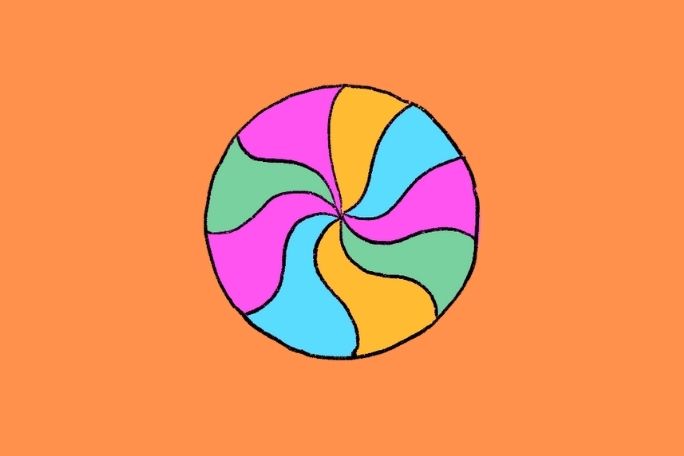Lesson summary
In this lesson, students will explore the concept of creative inspiration. They will investigate what inspiration looks like and how artists find inspiration starting with an IMAGI-NATION{TV} interview with X-Factor contestant Tommy Franklin. They will then learn about how creative constraints can provide opportunities for inspiration by limiting possibilities, making creativity less overwhelming. They will then have the opportunity to explore what inspires them creatively and develop a portfolio to explore a variety of methods for finding inspiration to create an artwork.
Learning intentions:
Students will...
- understand how artists find inspiration
- understand the value in creative constraints
- explore inspiration through portfolio work.
Success criteria:
Students can...
- complete comprehension activities
- write creatively using constraints
- create creative constraints
- reflect on ideas about and strategies for inspiration
- use a portfolio to collect ideas.
Lesson guides and printables
Curriculum links
Select your curriculum from the options below.
Lesson details
Curriculum mapping
Australian Curriculum content descriptions:
Choose by subject for Primary year level mapping:
Year 5 English:
- Clarify understanding of content as it unfolds in formal and informal situations, connecting ideas to students’ own experiences and present and justify a point of view (ACELY1699)
- Use comprehension strategies to analyse information, integrating and linking ideas from a variety of print and digital sources (ACELY1703)
- Plan, draft and publish imaginative, informative and persuasive print and multimodal texts, choosing text structures, language features, images and sound appropriate to purpose and audience (ACELY1704)
Year 6 English:
- Participate in and contribute to discussions, clarifying and interrogating ideas, developing and supporting arguments, sharing and evaluating information, experiences and opinions (ACELY1709)
- Use comprehension strategies to interpret and analyse information and ideas, comparing content from a variety of textual sources including media and digital texts (ACELY1713)
- Plan, draft and publish imaginative, informative and persuasive texts, choosing and experimenting with text structures, language features, images and digital resources appropriate to purpose and audience (ACELY1714)
Choose by subject for Secondary year level mapping:
Year 7 English:
- Use comprehension strategies to interpret, analyse and synthesise ideas and information, critiquing ideas and issues from a variety of textual sources (ACELY1723)
- Plan, draft and publish imaginative, informative and persuasive texts, selecting aspects of subject matter and particular language, visual, and audio features to convey information and ideas (ACELY1725)
Year 8 English:
- Interpret the stated and implied meanings in spoken texts, and use evidence to support or challenge different perspectives (ACELY1730)
- Use comprehension strategies to interpret and evaluate texts by reflecting on the validity of content and the credibility of sources, including finding evidence in the text for the author’s point of view (ACELY1734)
- Create imaginative, informative and persuasive texts that raise issues, report events and advance opinions, using deliberate language and textual choices, and including digital elements as appropriate (ACELY1736)
Years 7 & 8 Visual Arts:
Develop planning skills for art-making by exploring techniques and processes used by different artists (ACAVAM120).
Syllabus outcomes: EN3-1A, EN3-2A, EN3-3A, EN3-8D, EN4-1A, EN4-2A, EN4-4B, VAS4.6.
General capabilities: Literacy, Critical and Creative Thinking.
This lesson is part of a wider program: IMAGI-NATION{TV}.
Level of teacher scaffolding: Low – teachers will guide activities, but students will complete much of the work independently or with a partner.
Time required: 100+ minutes.
Tips for teachers: This lesson is designed to be flexible for use with various year levels and across the curriculum. It can easily be tailored or expanded to focus more deeply on the skills that students are exploring in their classroom context. For example, a primary English teacher might focus on literacy and comprehension, a secondary English teacher could allow for deep reflective thinking and a Visual Arts teacher could focus on constructing and notating a portfolio.
Resources required
- Art supplies – various (optional)
- Device with internet and presentation capability
- Digital devices for writing and collating resources (optional)
- Lined paper or notebook and pen/pencil – for each student (optional)
- Student Worksheets – one copy per student
Additional info
This lesson has been developed in partnership with AIME. AIME is an Imagination Factory that since 2005, has been creating pop-up Imagination Factories on university campuses around the world to unlock the internal narrative of marginalised kids, taking them from a world that tells them they can’t to a world that tells them they can. Kids who experience the Imagination Factory have gone on to achieve educational parity, rise up as entrepreneurs, and take on a whole new mindset that prepares them for success.
AIME created IMAGI-NATION{TV} & the IMAGI-NATION{CLASSROOM} experience to put a mentor in the home every day during the tough times of COVID-19 and beyond. It’s a daily TV show broadcast live on the internet, and it’s a gift for teachers, parents and kids to help make sense of today and imagine tomorrow.
The pursuit is to elevate knowledge; every guest we bring on knows something and has wisdom to share. This show is not just about entertainment to pass the time. We want to remake the mould for the modern hero – from beauty to brains, from selfies to self-knowledge, from hashtags to hope. IMAGI-NATION{TV} is seeking to unlock the best in every single one of us; to inspire a generation of heroes in the form of mentors who fight for a fairer world.


Welcome back!
Don't have an account yet?
Log in with:
Create your free Cool.org account.
Many of our resources are free, with an option to upgrade to Cool+ for premium content.
Already have an account?
Sign up with:
By signing up you accept Cool.org's Terms and Conditions(Opens in new tab) and Privacy Policy(Opens in new tab).